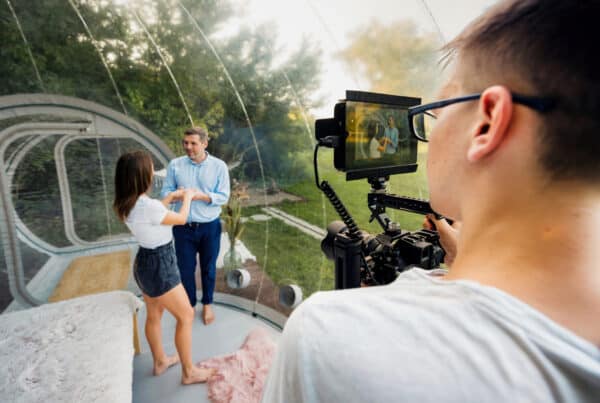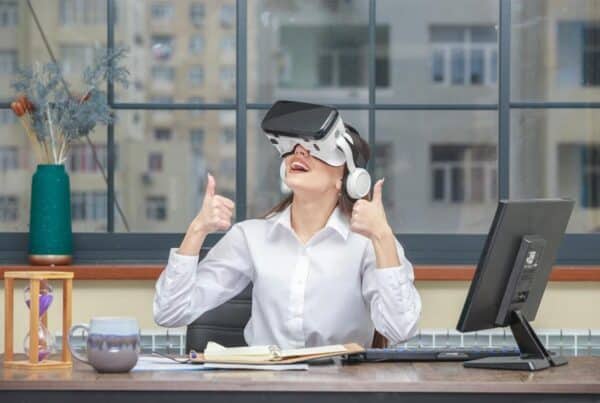Virtual reality (VR) is transforming the way we learn by creating immersive experiences that engage students in ways traditional methods cannot. Let’s dive into how VR enhances immersive learning experiences and why it’s becoming a vital tool in education.
Introduction
Immersive learning is an educational approach that uses technology to create engaging, interactive environments where learners can explore and interact with content in a meaningful way. Virtual reality (VR) is at the forefront of this movement, offering a unique platform for education that goes beyond textbooks and lectures. By enhancing learning experiences, VR not only makes education more engaging but also more effective.
What are the Benefits of Virtual Reality in Education?
One of the primary benefits of VR in education is increased engagement and motivation. Traditional learning methods can sometimes be passive and uninspiring, but VR immerses students in the subject matter, making learning an active and exciting process. This heightened engagement leads to improved knowledge retention, as students are more likely to remember what they have learned when they are actively involved in the process.
VR also allows for the development of practical skills through simulations. For example, medical students can practice surgeries in a virtual environment, gaining valuable hands-on experience without the risk of harming a patient. Similarly, engineering students can experiment with complex machinery and systems in a virtual space, learning through trial and error in a safe environment.
Moreover, VR fosters empathy and cultural awareness by allowing students to experience different perspectives and cultures firsthand. Virtual field trips to historical sites or cultural landmarks can provide a deeper understanding and appreciation of diverse cultures and histories.
How Does Virtual Reality Facilitate Different Learning Styles?
VR is a versatile tool that can accommodate various learning styles. For kinesthetic learners, VR offers hands-on experiences that allow them to learn by doing. Whether it’s conducting a virtual experiment or exploring a 3D model, kinesthetic learners can engage with the material in a way that suits their learning style.
Visual learners benefit from the enhanced visualization of concepts that VR provides. Complex ideas can be broken down into visual elements, making them easier to understand and remember. For auditory learners, immersive soundscapes in VR environments can enhance the learning experience by providing auditory cues and information that complement the visual and interactive elements.
Key Features of Virtual Reality that Enhance Learning
VR offers realistic simulations and scenarios that mimic real-world environments, providing students with a sense of presence and immersion. These interactive environments promote active learning, encouraging students to explore, experiment, and engage with the content.
One of the significant advantages of VR is the creation of safe spaces for experimentation and failure. Students can take risks and learn from their mistakes without real-world consequences, fostering a growth mindset and resilience. Additionally, VR allows for customizable learning experiences, tailoring content to meet the needs and preferences of individual learners.
Case Studies and Examples
In STEM education, VR is being used to teach subjects like engineering, biology, and environmental science. For instance, virtual dissections and environmental simulations provide students with hands-on experiences that enhance their understanding of complex concepts. Teach Maverick (2023) highlights how VR is revolutionizing STEM education by making learning more interactive and engaging.
In social studies and history, VR offers immersive historical reenactments and cultural explorations. Students can walk through ancient cities, witness historical events, and explore different cultures, gaining a deeper understanding of the past and its impact on the present.
Medical training is another area where VR is making a significant impact. Virtual simulations for surgeries and emergency responses allow medical students to practice and refine their skills in a controlled environment, improving their competence and confidence.
Challenges and Considerations
Despite its many benefits, there are challenges and considerations to keep in mind when implementing VR in education. Technical limitations and accessibility can be barriers, as not all students and institutions have access to the necessary technology. Training requirements for educators are also a consideration, as teachers need to be equipped with the skills and knowledge to effectively integrate VR into their teaching.
The cost of implementation is another factor, as VR technology can be expensive. However, as the technology advances and becomes more widespread, costs are expected to decrease, making VR more accessible to a broader audience.
Future Trends in VR for Education
The future of VR in education looks promising, with advances in technology such as AI integration and enhanced interactivity on the horizon. These developments will make VR even more effective and engaging as a learning tool. Increasing accessibility through mobile VR is another trend, allowing students to access VR experiences from their smartphones and tablets.
The potential for remote learning environments is also significant, as VR can create virtual classrooms where students from around the world can learn together in a shared space.
Conclusion
In conclusion, virtual reality has the transformative potential to revolutionize education by creating immersive, engaging, and effective learning experiences. As institutions recognize the benefits of VR and work to overcome the challenges, we can expect to see more widespread adoption of this technology in education. By embracing VR, we can enhance learning experiences and better prepare students for the future.
Transform education with Virtual Reality! Contact Virtually Anywhere today to discover how VR creates immersive learning experiences that boost engagement, retention, and hands-on understanding. From classrooms to corporate training, VR revolutionizes the way we learn. Start enhancing your learning experiences with VR today!


